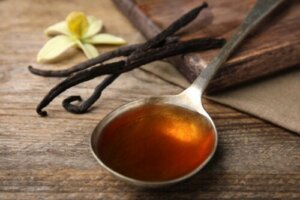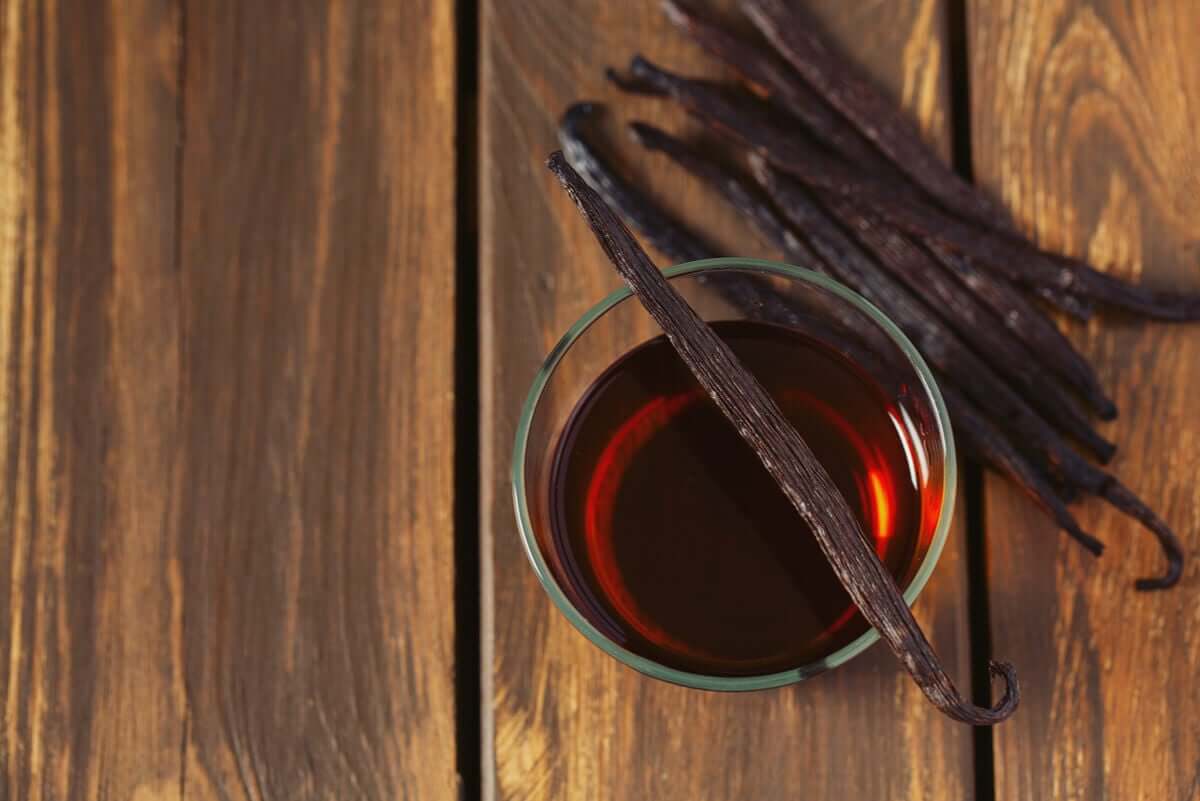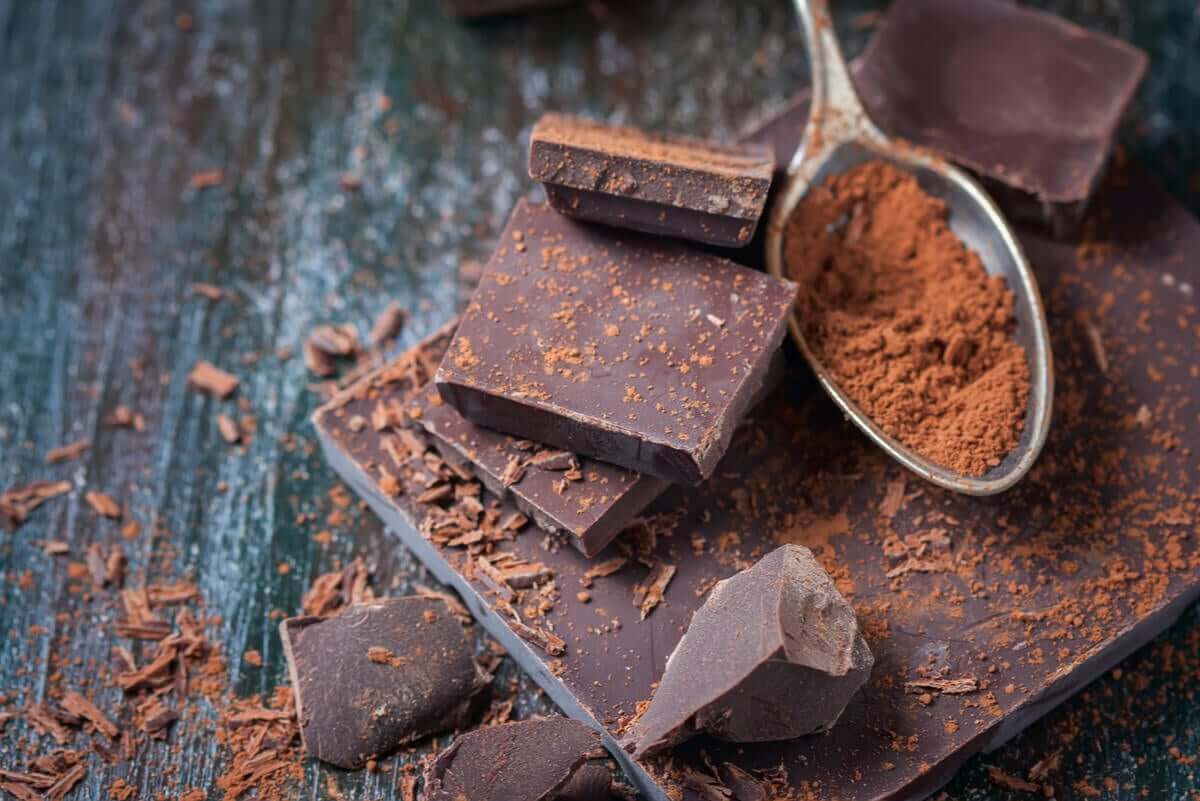Vanilla Essence and Extract: What's the Difference?


Written and verified by the nutritionist Anna Vilarrasa
Vanilla is one of the best known, appreciated, and used spices in the whole world. However, before using it in the kitchen, it’s normal to confuse two of its forms: vanilla essence and vanilla extract.
We find it helpful to know the characteristics of each one. This way, you’ll be able to choose the most suitable option and you’ll always know exactly which product is best for each recipe.
Vanilla essence and extract: An introduction to the spice
Vanilla is one of the most widely used condiments in the world. It has about 200 volatile compounds that give it a great variety of aromatic profiles. These change according to the varieties or the type of cultivation.
The natural presentation is the fruit of the plant in the form of a pod, even though it’s scarce and expensive. That’s why the industry has responded to the interest in developing a cheaper and easy-to-obtain version: artificial vanilla or essences.
The first people to grow vanilla were the Totonac Indians of Mexico, for whom it represented a cultural symbol. They sent it to the Aztecs, who used it to flavor chocolate drinks.
Nowadays, we also add it to dairy products, such as yogurt or ice cream, to make creams and as a flavoring in many manufactured products. Who could imagine a world without these delicious sweets?

How is vanilla obtained?
Real vanilla comes from the flower of an orchid: the Vanilla planifolia. It’s native to Central America, from where it spread to Europe. The French then introduced it to the African islands in the Indian Ocean: Madagascar, Reunion, and the Comoros which today are the main suppliers.
Its fruit in the form of a pod has a harvest time of between 6 and 9 months after pollination. It usually measures about 20 centimeters. Inside it, there are thousands of seeds surrounded by nutrients: sugars, fats, amino acids, and phenols.
These are harvested while they’re still green. To obtain the pod, which is the most common form for the market, it’s submitted to a healing process that consists of three phases:
- In the first stage, harvesters expose it to high temperatures with solar heat, immersion in boiling water or steam.
- Then they spread out in the sun and alternately protect it with a cloth for a few days. The heat evaporates some of the moisture from the pod and inhibits microbial growth.
- During the third stage, harvesters straighten and smooth it by hand and leave it to dry for a few weeks. Afterward, there’s a needed storage time during which it acquires a more pronounced taste and aroma. As an example, in Madagascar, they store it for 40 days. However, in Mexico, they store it for a few months.
Discover: How to Make Vanilla Slice
How is vanilla extract obtained?
To obtain vanilla extract, manufacturers use the original fruit of the plant as a starting point. They grind the beans in a mixture of ethyl alcohol and water. This way, all the compounds and aromas of the fruit pass into the liquid. Vanillin is one of the most powerful flavors and aromas.
It’s a pure product, manufacturers only use the necessary liquids to extract the active principles from the original fruit. Its aging allows it to develop a more complex and deep flavor.
There are specific regulations that allow the control of the quality of the vanilla extract. For example, in the United States, it must contain at least 35% alcohol and about 400 grams of vanilla seeds per 4 liters.
Also, the FDA regulates the possibility of adding additional ingredients such as sugar, dextrose, or glycerin. Only the products produced according to these regulations can have “vanilla extract” on their labels.
How is vanilla essence obtained?
Manufacturers synthetically prepare vanilla essence. It’s a product that imitates the aroma and taste of the fruit, but it doesn’t derive directly from it.
Vanillin is the main component of the flavor of the beans. In the process of synthetically obtaining it, manufacturers use other substances, such as pine bark, clove oil, lignin, or rice bran. Also, producers use added ingredients such as water, ethanol, emulsifiers, and chemical extracts.
Vanilla essence and extract: What are the main differences?
At first glance, it’s difficult to tell them apart and to know which is better to use for each recipe. However, their origin, their possible applications and the final price are quite different.
The price
Obtaining vanilla in the traditional way is a laborious process. Harvesters pollinate each flower by hand and apply curing and resting to the pods. This process can last from weeks to months.
In addition, there are few regions for the cultivation and production of vanilla. For these two reasons, the high cost of vanilla extract and the natural vanilla beans can be easily understood. As a consequence, most of the vanilla beans people around the world consume today are synthetic.
The origin
Just as we described when we explained the production process, the process of obtaining vanilla essence and vanilla extract is very different. While one is a natural derivative, the other is a synthetic imitation of its main component.
Its possible uses
Manufacturers use both to produce food products, but given the difference in price and quality, these can change significantly. The food industry uses vanilla essence in the production of chocolates, sweets, cookies, and cereals.
However, if the objective is to obtain higher quality products or those in which vanilla is one of the main protagonists, it’s best to go for vanilla extract. Ice cream or yogurt manufacturers in the United States must use natural extracts in their elaboration, otherwise they cannot label their products as “vanilla”.

Read more: Vegan Treats – Four Delicious Recipes
Vanilla essence and extract in gastronomy
There are notorious differences between both products. What sets them apart is the superior quality, flavor, and aroma of the extract in comparison with the essence. Therefore, when needed in small quantities, it’s usually best to use the extract.
There are other ways of presenting this valuable spice in the kitchen. Chefs and home cooks can replace vanilla essence and vanilla extract with the pulp of the bean or by pure vanilla powder.
Given the high cost of the extract and the possible difficulty of finding it on the market, you can even make it at home from beans and alcohol.
Although its main use is in recipes and sweet preparations, it’s never too late to experiment in the kitchen and try to introduce this delicate spice in meat, fish, and other salty dishes.
All cited sources were thoroughly reviewed by our team to ensure their quality, reliability, currency, and validity. The bibliography of this article was considered reliable and of academic or scientific accuracy.
- García José J. Especias, delicias exóticas. Fundación Intermon Oxfam. 2007.
- McGee H. La cocina y los alimentos. Enciclopedia de la ciencia y la cultura de la comida. Random House Mondadori. 2007.
- US Food and Drug Administration. CFR – Code of Federal Regulations Title 21. Subpart B – Requirements for specific standardized food dressings and flavorings.
- Vainilla. Diccionario Larousse Gastronómico.
This text is provided for informational purposes only and does not replace consultation with a professional. If in doubt, consult your specialist.








